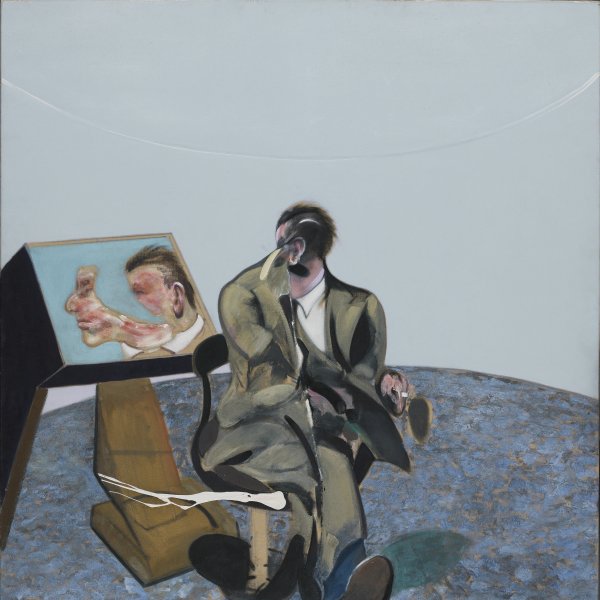Francis Bacon
Dublin, 1909-Madrid, 1992
Francis Bacon is one of the most representative and disturbing artists of the post-Second World War period. His personal, tormented and decomposed vision of the human being is the best testament to the crisis that afflicted mankind during the second half of the twentieth century.
Born in Dublin, albeit of English parents, in 1925 Bacon went to live in London, where he started out as an interior decorator. He began painting as a self-taught artist in the early 1930s after visiting a Picasso exhibition at the Galerie Rosenberg in Paris. Although Herbert Read published one of his paintings (Crucifixion, 1933. London, Muderme) in the book Art Now as early as 1933, his works were not initially well received. The few successes he reaped during his first years as a painter led him to destroy most of his early work in 1942. After being declared unfit for active military service in the Second World War, he served as an Air Raid Patrol officer during the first part of the war and did not take up painting regularly until 1944. In 1946 the New York Museum of Modern Art acquired his Painting, executed that year, and from this point onwards his work began to enjoy a reputation. In 1956 he was invited to represent Great Britain in the Venice Biennale together with Ben Nicholson and Lucian Freud.
Bacon was always interested in the more bitter side of existence and his works are metaphors for man’s struggle with his environment. His personal pictorial language shows the most mysterious and disturbing aspects of the human condition; his portraits are not intended as physical likenesses of the sitters, but seek to capture their spiritual selves. As to technique, Bacon was a perfectionist and displayed an unrivalled mastery at blending chance and order simultaneously. His works combine interest in photography with his admiration for the Great Masters of painting, especially Velázquez, Rembrandt and Goya.
Born in Dublin, albeit of English parents, in 1925 Bacon went to live in London, where he started out as an interior decorator. He began painting as a self-taught artist in the early 1930s after visiting a Picasso exhibition at the Galerie Rosenberg in Paris. Although Herbert Read published one of his paintings (Crucifixion, 1933. London, Muderme) in the book Art Now as early as 1933, his works were not initially well received. The few successes he reaped during his first years as a painter led him to destroy most of his early work in 1942. After being declared unfit for active military service in the Second World War, he served as an Air Raid Patrol officer during the first part of the war and did not take up painting regularly until 1944. In 1946 the New York Museum of Modern Art acquired his Painting, executed that year, and from this point onwards his work began to enjoy a reputation. In 1956 he was invited to represent Great Britain in the Venice Biennale together with Ben Nicholson and Lucian Freud.
Bacon was always interested in the more bitter side of existence and his works are metaphors for man’s struggle with his environment. His personal pictorial language shows the most mysterious and disturbing aspects of the human condition; his portraits are not intended as physical likenesses of the sitters, but seek to capture their spiritual selves. As to technique, Bacon was a perfectionist and displayed an unrivalled mastery at blending chance and order simultaneously. His works combine interest in photography with his admiration for the Great Masters of painting, especially Velázquez, Rembrandt and Goya.





